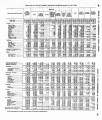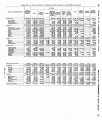| OCR Text |
Show REPORT OF THE COMMISSIONER OF INDIAN AFFAIRS DEPARTMEONFT T HE INTERIOR, OFFICE OF INDIAAFNFA IRE, Waahhgton, D. C., September 1,1984. SIR:I have the honor to submit this the Ninety-third Annual Re-port of the Bureau of Indian Affairs for the fiscal year ended June 30, 1924. Its contents pertain largely to the cardinal functions of administration established in recent years along the lines of improv-ing the health of the Indians as the vital basis of their value to them-selves and to our general population; of providing the educational guidance that will fit them for contact and competition with the pro-gressive, English-speaking elements of the American people,. and of protecting and developing their varied property interests in such manner as will train them in practical industry and self-support. HEALTH Pomuno~.-The Indian population is wholly dependent upon the difference between its birth rate and death rate for its accessions and losses. During the fiscal year to which this report pertains, there was a normal gain, as measured by reservation standards. , The net increase, while not large, is a favorable indication of what may be expected under better industrial conditions and better health serv-ice, both of which are foreshadowed in the scheme of blending all constructive efforts in a five-year program, the main objectives of which are the reduction of infant mortality, the prevention of dis-eases, the rehabilitation, so far as practicable, of those who are in-capacitated through illness, and the improvement of living con-ditions. DISEASES.-Indians are subject to the same diseases which afflict other people. They have more trachoma and tuberculosis, but less . diphtheria, scarlet fever, toxic goiter, cancer, typhoid feper, .and cardio-vascular diseases. Under similar conditions of living, it is doubtful whether the Indians would have any more tuberculosis and trachoma than other people, and it is belieped that as the industria1 conditions improve and when the appropriations for sanitation and medical aid become sufficient to throw around them the same safe-guards and give them the same protective attention as given to people in organized communities, preventable diseases will be no more prevalent amon Indians than among the white people; for up to a certain limit, pu%lic health is purchaseable. Under adequately financed health efforts, a decrease in illness and in the death rate can be attained. Indian mothers know too little of hygiene and sanitation, and under existing conditions so favorable to infection by the germs of tuberculosis-a disease to which many Indian children succumb-it |































































